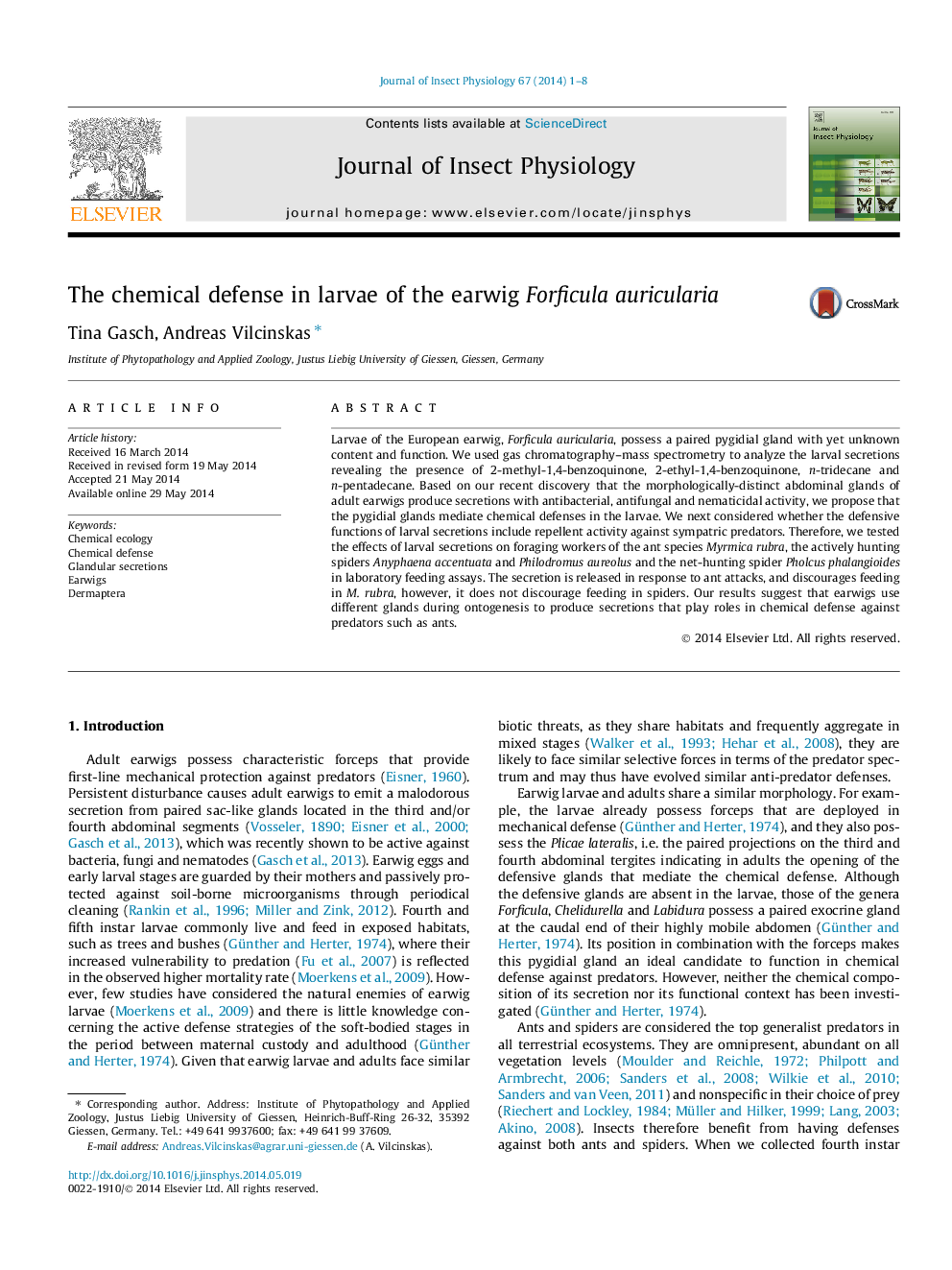| کد مقاله | کد نشریه | سال انتشار | مقاله انگلیسی | نسخه تمام متن |
|---|---|---|---|---|
| 2840448 | 1571003 | 2014 | 8 صفحه PDF | دانلود رایگان |

• The first evidence for chemical defense in earwig larvae is presented.
• Upon disturbance, earwig larvae emit a volatile secretion off paired pygidial glands.
• The secretion contains two 1,4-benzoquinones and two alkanes.
• The secretion showed repellent activity against the ant Myrmica rubra.
Larvae of the European earwig, Forficula auricularia, possess a paired pygidial gland with yet unknown content and function. We used gas chromatography–mass spectrometry to analyze the larval secretions revealing the presence of 2-methyl-1,4-benzoquinone, 2-ethyl-1,4-benzoquinone, n-tridecane and n-pentadecane. Based on our recent discovery that the morphologically-distinct abdominal glands of adult earwigs produce secretions with antibacterial, antifungal and nematicidal activity, we propose that the pygidial glands mediate chemical defenses in the larvae. We next considered whether the defensive functions of larval secretions include repellent activity against sympatric predators. Therefore, we tested the effects of larval secretions on foraging workers of the ant species Myrmica rubra, the actively hunting spiders Anyphaena accentuata and Philodromus aureolus and the net-hunting spider Pholcus phalangioides in laboratory feeding assays. The secretion is released in response to ant attacks, and discourages feeding in M. rubra, however, it does not discourage feeding in spiders. Our results suggest that earwigs use different glands during ontogenesis to produce secretions that play roles in chemical defense against predators such as ants.
Figure optionsDownload as PowerPoint slide
Journal: Journal of Insect Physiology - Volume 67, August 2014, Pages 1–8